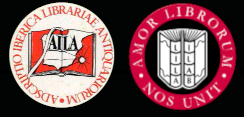


Home |
Temáticas |
Catálogos |
Pedidos |
  |  |
|||||||
|

|
RUGENDAS. (Johann Moritz) HABITANTE DE GOYAS, QUADRO A ÓLEO PINTADO SOBRE MADEIRA. |
|
|
Clique nas imagens para aumentar. SÁ DE MENESES. (Francisco) MALACA CONQUISTADA PELO GRANDE AFFONSO DE ALBUQUERQUE, [3.ª EDIÇÃO, 1779]Poema Heroico de Francisco de Sá de Meneses; com os argumentos de D. Bernarda Ferreira. Terceira impressaõ mais correcta que as precedentes. LISBOA Na Offic. de JOZÉ DE AQUINO BULHOENS. Anno de M. DCC. LXXIX. [1779] Com licença da Real Meza Censoria. In 4.º de 20,7x15,2 cm. Com [viii], 461, [iii em br.] págs. Encadernação do século XIX, com nervos, rótulo e ferros a ouro. Folhas de guarda em papel marmoreado. Cortes das folhas decorados com padrão marmoreado de grande beleza. Impressão muito nítida sobre papel de linho encorpado e muito alvo. Com pequena vinheta no centro da folha de rosto. As páginas preliminares sem numeração contêm prólogo «Ao Leitor» do editor e as peças em verso em louvor do autor já incluídas na 1.ª e na 2.ª edição. Exemplar com desgaste na encadernação, em especial nas charneiras e com pequenas faltas de pele. Valiosa obra clássica da literatura portuguesa e importante fonte para a história das conquistas portuguesas no Oriente, pois o autor terá tido acesso a informações sobre a Conquista de Malaca em 1511, que não constam de mais nenhuma outra fonte disponível, através de memórias conservadas pela sua família sobre antepassados que participaram na conquista. A 1ª edição foi publicada em 1634 e a segunda edição em 1658. Foi traduzida para inglês em 1970. Esta 3.ª edição é importante para o estudo e fixação do texto, pois transcreve maioritariamente a 2.ª edição, com 1339 oitavas, e que reflecte a última versão do texto alterado pelo autor, mas, ao mesmo tempo, inclui algumas variantes provenientes do texto da 1.ª edição. Knowlton, tradutor da versão inglesa desta obra, publicou um estudo em 1992 onde demonstra que o autor, com as alterações da 2.ª edição, que são reproduzidas nesta 3.ª edição, acentua as características barrocas do poema. A intenção do autor ao publicar a 2.ª edição foi incentivar o Rei D. Afonso VI a reconquistar Malaca, que estava nas mãos dos holandeses desde 1641. O impressor desta 3.ª edição repete o mesmo repto aos portugueses de fim do século XVIII. Malaca tem ainda hoje uma aura mítica (um dos grandes feitos de armas de Afonso de Albuquerque) e uma forte ligação a Portugal, apesar de ter sido ocupada por holandeses e ingleses. Nela existe uma comunidade de descendentes de portugueses, com uma língua própria baseada no português antigo. Francisco de Sá de Meneses (1600?-1664?) depois do falecimento da sua mulher professou na Ordem de São Domingos, tendo acabado os seus dias no Convento de Benfica sob o nome religioso de Fr. Francisco de Jesus. Além deste poema épico é autor de poesias líricas e peças de teatro.
Very clear print on thick, very smooth linen paper. Small vignette in the centre of the title page. The unnumbered preliminary pages contain the editor"s prologue 'To the Reader' and the verse pieces in praise of the author already included in the 1st and 2nd editions. Copy showing signs of wear on the binding, especially on the hinges, and with small leather flaws. A valuable classic work of Portuguese literature and an important source for the history of the Portuguese conquests in the East, as the author had access to information about the Conquest of Malacca in 1511, which is not available in any other source, through his family"s memories of ancestors who took part in the conquest. The first edition was published in 1634 and the second in 1658. It was translated into English in 1970. This 3rd edition is important for the study and fixation of the text, as it mostly transcribes the 2nd edition, with 1339 octaves, and which reflects the last version of the text altered by the author, but at the same time includes some variants from the text of the 1st edition. Knowlton, translator of the English version of this work, published a study in 1992 in which he shows that the author, with the alterations of the 2nd edition, which are reproduced in this 3rd edition, emphasises the baroque characteristics of the poem. The author"s intention in publishing the 2nd edition was to encourage King Afonso VI to reconquer Malacca, which had been in Dutch hands since 1641. The printer of this 3rd edition repeats the same challenge to the Portuguese at the end of the 18th century. Malacca still has a mythical aura (one of Afonso de Albuquerque"s great feats of arms) and a strong connection to Portugal, despite having been occupied by the Dutch and the British. It is home to a community of Portuguese descendants, with its own language based on Old Portuguese. Francisco de Sá de Meneses (1600?-1664?), after the death of his wife, professed in the Order of St Dominic and ended his days in the Convent of Benfica under the religious name of Fr. Francisco de Jesus. As well as this epic poem, he wrote lyrical poetry and theatre plays. Referências/References: Inocêncio, III, p. 52. Barbosa Machado, II, 250-251. Referência: 2307PG002
Local: M-6-E-21 Caixa de sugestões A sua opinião é importante para nós. Se encontrou um preço incorrecto, um erro ou um problema técnico nesta página, por favor avise-nos. 
|
Pesquisa Simples




|
||
 |
|||
|